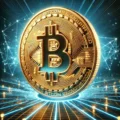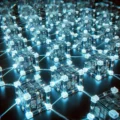What Are NFTs and How Do They Work?
The NFT Revolution: What Are They, How Do They Work, and Why You Should Care
In the world of digital assets, there’s been a buzzworthy trend that’s been gaining traction in recent years – Non-Fungible Tokens (NFTs). If you’re new to the game or not sure what all the fuss is about, you’re in luck because we’re here to break down what NFTs are, how they work, and why they’re a big deal.
What Are NFTs?
To start, let’s define what an NFT is. Simply put, an NFT is a unique digital token that represents ownership of a specific item or asset. Think of it like a digital collectible – but instead of being stored in your attic or online marketplace, it exists on the blockchain.
The term “Non-Fungible” might seem counterintuitive, as it implies that these tokens can’t be swapped for something else of equal value. But here’s the thing: while some NFTs might have similar characteristics (e.g., a rare digital art piece), each one is unique and indivisible. You can own multiple NFTs, but you can’t use them interchangeably like you would with traditional assets.
How Do NFTs Work?
So, how do these digital tokens work? To understand this, let’s dive into the basics of blockchain technology and decentralized marketplaces.
Blockchain is a decentralized ledger that records transactions on a network. Think of it as a digital accounting book – but instead of being stored in a physical location, it’s hosted across thousands of nodes worldwide.
Decentralized marketplaces, like OpenSea or Rarible, are platforms that allow creators to sell their NFTs to collectors and enthusiasts. These marketplaces operate on top of blockchain technology, ensuring that every transaction is secure, transparent, and tamper-proof.
When an artist creates an NFT, they upload it to the blockchain platform using a process called minting (more on this later). The NFT then exists as a unique digital token, which can be bought, sold, and traded with other collectors.
The Magic of Blockchain
So, why does blockchain matter for NFTs? Here’s where things get interesting. When an artist creates an NFT, they’re creating a unique digital asset that’s linked to the blockchain. This linking process is what makes NFTs truly unique – because each token has a distinct identifier (or hash) that can’t be replicated.
Think of it like a digital fingerprint. Just as your fingerprints are unique to you, an NFT’s hash serves as its “digital identity.” When someone buys or sells an NFT, this transaction is recorded on the blockchain, ensuring that ownership is transferred securely and transparently.
How Do NFTs Get Created?
Now that we’ve covered the basics of NFTs, let’s talk about how they’re created. The process is called minting, and it involves a few key steps:
- Artistic creation: The artist creates their digital artwork or asset (e.g., a piece of art, music track, or even in-game items).
- Blockchain setup: The artist sets up an account on a blockchain platform, like Ethereum or Flow.
- Minting process: Using the platform’s tools and software, the artist “mints” their digital asset by uploading it to the blockchain. This creates a unique digital token that represents ownership of the artwork.
- Smart contract activation: Once minted, an NFT is linked to a smart contract – essentially, a self-executing agreement that automates the transfer of ownership and any associated rules.
Types of NFTs
NFTs can represent a wide range of digital assets, including:
- Digital art: Unique artworks created using various software and techniques (e.g., 3D modeling, pixel art).
- Music tracks: Exclusive audio recordings that can be bought, sold, or traded.
- In-game items: Digital collectibles that can be used in online games or virtual worlds.
- Collectibles: Rare digital assets with inherent value (e.g., limited edition sports cards, vintage video games).
- Event tickets: Exclusive access to events, like concerts, meet-and-greets, or even private parties.
The NFT Market: Trends and Insights
As the NFT market continues to grow, here are some key trends and insights:
- Growth of new platforms: Decentralized marketplaces like OpenSea, Rarible, and Mintable are becoming increasingly popular among collectors and creators.
- Rise of community engagement: NFTs are fostering a sense of community among enthusiasts, with events, meetups, and online forums sprouting up around the world.
- Artistic innovation: Artists are experimenting with new mediums and techniques to create unique digital experiences that push the boundaries of what’s possible in the NFT space.
Why Should You Care About NFTs?
So, why should you care about NFTs? Well, here’s the thing: these digital tokens represent a new frontier in art, music, collectibles, and more. By embracing NFTs, creators can:
- Monetize their art: Digital artists can now earn money directly from their work without intermediaries.
- Build brand awareness: Collectors and enthusiasts are looking for unique experiences – NFTs offer a way to showcase artistic talent and build community around it.
- Invest in emerging markets: NFTs represent an exciting opportunity for investors to tap into new markets and potentially reap rewards.
Challenges and Controversies
While the NFT market has its fans, there are also some challenges and controversies surrounding these digital tokens:
- Market volatility: The value of NFTs can fluctuate rapidly due to market trends and supply-and-demand imbalances.
- Intellectual property concerns: Questions arise about ownership rights, copyright infringement, and the potential for counterfeit or pirated content.
- Environmental impact: The energy consumption required to create and mint NFTs has raised concerns about their environmental sustainability.
In conclusion, NFTs represent a fascinating intersection of art, technology, and entrepreneurship. By understanding how they work and what they offer, you can start exploring this exciting new world – whether as an artist, collector, or investor. Remember that the future is uncertain, but one thing’s for sure: Non-Fungible Tokens are here to stay.
Final Thoughts
As we wrap up this article, we hope you’ve gained a deeper understanding of NFTs and their potential. Whether you’re an early adopter or just starting to learn about these digital tokens, the most important thing is to keep exploring and learning.
Remember, the world of NFTs is constantly evolving – and that’s what makes it so exciting. Stay curious, stay open-minded, and who knows? You might just find yourself at the forefront of a revolution in art, music, or collectibles.






